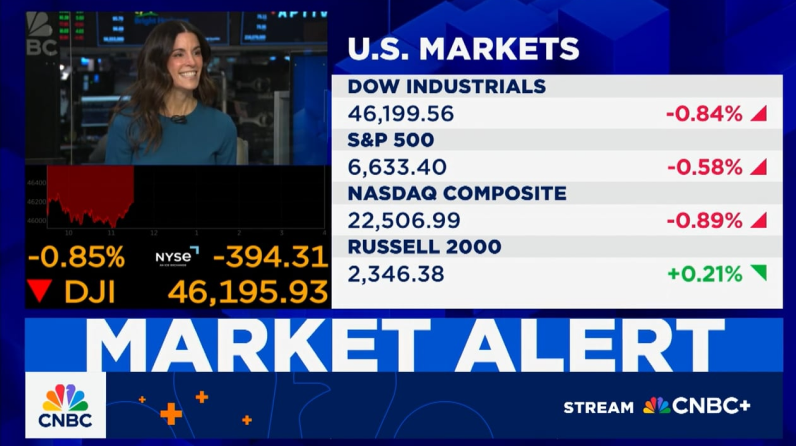

We remain focused on the destination for rates, rather than the path, and are positioning portfolios appropriately for both rates and inflation to be modestly lower by year-end.
After several months of steamy data that lowered expectations for Federal Reserve (Fed) rate cuts and created fears of re-accelerating inflation, the first glimpse into U.S. economic data for April delivered a short-term sense of relief. April’s non-farm payrolls report showed that the U.S. economy added +175k jobs versus consensus for a +240k gain. The monthly gains were driven by health care and social assistance, transportation and warehousing, and retail trade, accounting for gains of +87k, +22k and +20k, respectively. Most industries exhibited positive or flat readings for the month with the most notable outlier being a -16k decline in temporary help services. Also, slight revisions were made to both February and March payrolls data, with February’s print revised down once again to +236k from +270k and March revised up to +315k.
Unemployment ticked slightly higher to 3.9% from 3.8% the month prior while the participation rate remained steady at 62.7%. The number of people employed part-time for economic reasons, those currently not in the labor force who want a job, and those marginally attached to the labor force were all essentially unchanged in the month, indicating no real shift in terms of the makeup of the labor market. The average workweek for all employees declined only slightly by 0.1 hour to 34.3 hours, also an indication that demand remains fairly consistent.
In our view, the most encouraging aspect of the report was the moderation in wage growth: average hourly earnings rose by only +0.2% month-over-month and +3.9% year-over-year. This was below expectations of most economists for a +0.3% or +0.4% month-over-month increase and, if projected out over a 12-month period, is consistent with +2% wage inflation. Interestingly, the print is inconsistent with the previously released employment costs index, also compiled by the U.S. Bureau of Labor Statistics, which showed that wages and benefits increased by +1.2% in the first quarter and +4.1% over 1Q 2023.
In terms of trends we are watching, +14k jobs were added in goods-producing industries with construction and manufacturing accounting for +9k and +8k, respectively. Manufacturing hours worked also remained stable at 40 hours for April, perhaps indicating that the weakness in the ISM Manufacturing PMI survey reported yesterday is not the resumption of the previous contractionary trend. In addition, we believe the sharp deceleration in jobs added in leisure and hospitality in the month, from a prior three-month average of +58k to only +5k this month, could be contributing to the reported decline in wage growth; that figure could bounce back in May.
As we cited in our note earlier this week on the Fed meeting, we believe the emphasis that Fed Chair Jerome Powell placed on the dual mandate in his press conference on Wednesday afternoon amplifies the importance of this report. Balance in the labor market could yield continued moderation in wages and this should transmit to CPI and PCE over the coming months. In terms of rate cut expectations, the timing of the first rate cut was pulled forward incrementally following today’s release with several market observers hypothesizing that today’s print puts July back in play for the FOMC.
In our view, equities are rallying early and 2-year yields are falling in response to the print, but it is important to note that the Fed has been transparent about the difficulty of forecasting in this dynamic environment and, as such, is telegraphing perhaps an overemphasis on individual data points. This creates the foundation for outsized moves in markets when data is reported outside of consensus, such as we may see today. Instead, we remain focused on the destination for rates, rather than the path, and as a result are positioning portfolios appropriately for both rates and inflation to be modestly lower by year-end.


VIDEO
The Kantor Group | Charles Kantor’s Year-End Reflections and Key Questions as We Head Into 2026

INSIGHTS
CIO Notebook: Dual Release of Delayed Non-Farm Payrolls Likely Supports Another Cut

INSIGHTS
Using Tax-Free Gifts for Wealth Transfer

INSIGHTS
CIO Notebook: Powell Plays the Middle as Fed Cuts Rates

MARKET COMMENTARY
Giving Thanks for Market Strength

INSIGHTS
CIO Notebook: September U.S. Non-Farm Payrolls Further Complicate the Narrative

VIDEO
Holly Newman Kroft Featured on CNBC’s Money Movers November 18
VIDEO
Plan for Peace of Mind with Our Estate Planning Organizer
MARKET COMMENTARY
Some Tricks, More Treats
INSIGHTS
CIO Notebook: Markets Rattled as Fed Leans Hawkish
REPLAY
Private Wealth Investment Outlook 4Q25
INSIGHTS
CIO Notebook: September Core CPI Comes in Late but Light
INSIGHTS
Charitable Fundraising: Moving Beyond Cash
IMPORTANT INFORMATION:
This material is provided for informational purposes only and nothing herein constitutes investment, legal, accounting or tax advice, or a recommendation to buy, sell or hold a security. This material is general in nature and is not directed to any category of investors and should not be regarded as individualized, a recommendation, investment advice or a suggestion to engage in or refrain from any investment-related course of action. Any views or opinions expressed may not reflect those of the firm as a whole. Neuberger Berman products and services may not be available in all jurisdictions or to all client types. Diversification does not guarantee profit or protect against loss in declining markets. Investing entails risks, including possible loss of principal. Investments in private equity are speculative and involve a higher degree of risk than more traditional investments. Investments in private equity are intended for sophisticated investors only. Unless otherwise indicated, returns shown reflect reinvestment of dividends and distributions. Indexes are unmanaged and are not available for direct investment. Investing entails risks, including possible loss of principal. Past performance is no guarantee of future results.
Portfolio positioning views expressed herein are those of Neuberger Berman’s Private Wealth Investment Group, which may include those of the Neuberger Berman’s Asset Allocation Committee. Asset allocation and positioning views are based on a hypothetical reference portfolio. The Private Wealth Investment Group analyzes market and economic indicators to develop asset allocation strategies. The Private Wealth Investment Group works in partnership with the Office of the CIO. The Private Wealth Investment Group also consults regularly with portfolio managers and investment officers across the firm. The Asset Allocation Committee is comprised of professionals across multiple disciplines, including equity and fixed income strategists and portfolio managers. The Asset Allocation Committee reviews and sets long-term asset allocation models, establishes preferred near-term tactical asset class allocations and, upon request, reviews asset allocations for large, diversified mandates. Asset Allocation Committee members are polled on asset classes and the positional views are representative of an Asset Allocation Committee consensus. The views of the Asset Allocation Committee and the Private Wealth Investment Group may not reflect the views of the firm as a whole and Neuberger Berman advisers and portfolio managers may take contrary positions to the views of the Asset Allocation Committee or the Private Wealth Investment Group. The Asset Allocation Committee and the Private Wealth Investment Group views do not constitute a prediction or projection of future events or future market behavior. Defensive positioning generally means an underweight bias on allocations to risk assets such as equities and alternatives. Positioning views may change over time without notice and actual client positioning may vary significantly. Discussion of yield characteristics or total returns of different asset classes are for illustrative purposes only. Such asset classes, such as equities and fixed income, may have significantly different overall risk-return characteristics which should be consider before investing.
The information in this material may contain projections, market outlooks or other forward-looking statements regarding future events, including economic, asset class and market outlooks or expectations, and is only current as of the date indicated. There is no assurance that such events, outlook and expectations will be achieved, and actual results may be significantly different than that shown here. The duration and characteristics of past market/economic cycles and market behavior, including any bull/bear markets, is no indication of the duration and characteristics of any current or future be market/economic cycles or behavior. Information on historical observations about asset or sub-asset classes is not intended to represent or predict future events. Historical trends do not imply, forecast or guarantee future results. Information is based on current views and market conditions, which will fluctuate and may be superseded by subsequent market events or for other reasons.
Discussions of any specific sectors and companies are for informational purposes only. This material is not intended as a formal research report and should not be relied upon as a basis for making an investment decision. The firm, its employees and advisory accounts may hold positions of any companies discussed. Nothing herein constitutes a recommendation to buy, sell or hold a security. It should not be assumed that any investments in securities, companies, sectors or markets identified and described were or will be profitable. Investment decisions and the appropriateness of this content should be made based on an investor's individual objectives and circumstances and in consultation with his or her advisors.
Neuberger Berman Investment Advisers LLC is a registered investment adviser.
The “Neuberger Berman” name and logo are registered service marks of Neuberger Berman Group LLC